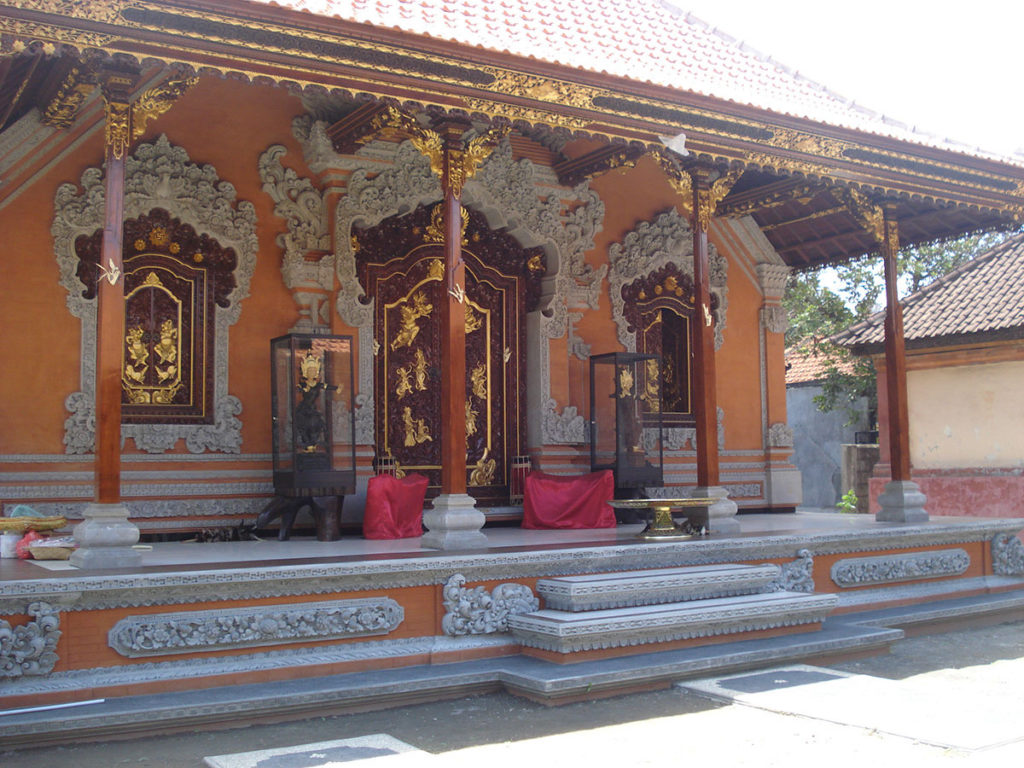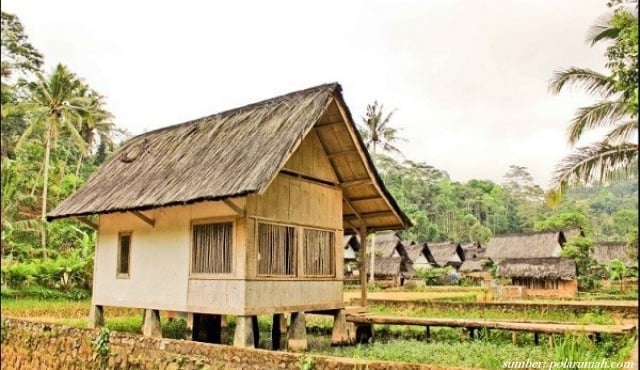
The Traditional Rumah Pamerajan: An Overview of Its Cultural Significance
Rumah Adat Rumah Pamerajan is a traditional house indigenous to certain regions of Indonesia, notably among communities that cherish their cultural heritage and architectural identity. These houses are more than mere dwellings; they embody the history, spirituality, and social structure of the local people. As a vital part of Indonesia’s diverse cultural tapestry, Rumah Pamerajan stands as a testament to indigenous craftsmanship, community values, and historical continuity. This article explores the architectural features, cultural significance, construction techniques, ornamentation, functional layout, preservation efforts, and contemporary adaptations of Rumah Pamerajan, providing a comprehensive understanding of this remarkable traditional house.
Architectural Features of Rumah Pamerajan in Traditional Design
Rumah Pamerajan is distinguished by its distinctive architectural form, characterized by a multi-tiered roof structure that often resembles a pagoda or a series of layered eaves. The house typically sits on stilts, elevating it above ground level, which serves both practical and symbolic purposes—protection from flooding and a separation of the spiritual and physical worlds. The walls are usually made from natural materials such as bamboo, wood, or woven reeds, allowing for ventilation and adaptability to the local climate. The house’s overall shape emphasizes verticality and harmony with nature, with intricate wooden carvings adorning the façade and support beams. The spatial arrangement often includes a central main room, surrounded by smaller auxiliary spaces, reflecting the community’s social hierarchy and cultural values.
The roof design of Rumah Pamerajan is particularly notable for its complexity and symbolic significance. It often features multiple tiers with upward-curving eaves, which are believed to ward off evil spirits and bring good fortune. The construction of these roofs requires skilled craftsmanship, utilizing traditional techniques passed down through generations. The house’s structural framework relies on wooden joints and pegs, avoiding nails or modern fasteners, which underscores the traditional building methods. Large open verandas or porches often extend from the main structure, serving as transitional spaces between indoor and outdoor environments, facilitating social interactions and community gatherings.
Windows and door placements are deliberately designed to optimize airflow and natural light, with latticework or woven panels providing privacy without sacrificing ventilation. The overall design emphasizes symmetry, balance, and harmony with the surrounding environment, reflecting the community’s spiritual beliefs and respect for nature. The aesthetic appeal of Rumah Pamerajan lies in its intricate wooden carvings, colorful ornaments, and the harmonious integration of form and function, making it a quintessential example of indigenous architecture.
Historical Significance of Rumah Pamerajan in Local Culture
Historically, Rumah Pamerajan has played a central role in the social and spiritual life of its community. It is more than a residence; it is a cultural symbol that encapsulates the identity, values, and traditions of the local people. Traditionally, these houses are built during significant community events or rites of passage, such as weddings, funerals, or festivals, marking important milestones in communal life. The house often functions as a gathering place for communal decision-making, ceremonies, and celebrations, reinforcing social cohesion and collective identity.
The design and construction of Rumah Pamerajan are deeply rooted in local mythology and ancestral beliefs. Many features of the house, from the roof shape to the decorative carvings, are imbued with spiritual symbolism intended to protect inhabitants from evil spirits and ensure prosperity. These houses serve as physical embodiments of the community’s spiritual worldview, reflecting their relationship with nature, ancestors, and the divine. The house’s prominence within the village landscape signifies its importance as a cultural and spiritual hub, often situated at the center of traditional settlements.
Over centuries, Rumah Pamerajan has also functioned as a symbol of cultural resilience and continuity amid external influences and modernization. Despite external pressures, communities have preserved its traditional construction methods and aesthetic features, viewing the house as a tangible link to their heritage. The structure embodies local craftsmanship and artistry, passed down through generations, which helps maintain a sense of cultural pride and identity. As such, Rumah Pamerajan not only provides shelter but also preserves the intangible cultural heritage of the community.
In addition to its spiritual and social functions, Rumah Pamerajan has historically served as a venue for education, storytelling, and the transmission of cultural knowledge. Elders and community leaders often gather in these houses to pass down oral histories, customary laws, and traditional practices to younger generations. This role underscores the house’s importance as a cultural repository and a symbol of continuity for the community’s collective memory.
Construction Materials and Techniques Used in Rumah Pamerajan
The construction of Rumah Pamerajan relies heavily on locally sourced natural materials, which reflect the community’s deep understanding of their environment and sustainable building practices. The primary materials include bamboo, teak, or other durable hardwoods for structural frameworks, along with woven bamboo or reeds for wall panels. These materials are chosen for their availability, flexibility, and resilience to the tropical climate. The use of wood and bamboo also allows for intricate carvings and decorative elements, which are integral to the house’s aesthetic.
Traditional construction techniques emphasize craftsmanship and community participation. Skilled artisans and builders employ woodworking joints, such as mortise and tenon, to assemble the house without nails or metal fasteners, showcasing their expertise and reverence for traditional methods. The roof construction involves complex layering and interlocking wooden components, requiring precise craftsmanship to ensure stability and aesthetic harmony. The stilts supporting the house are often reinforced with stones or concrete bases to prevent decay and protect against pests.
The roofing materials typically include thatch or wooden shingles, which offer insulation and weather resistance. The layered roof structure is built to facilitate rain runoff and air circulation, essential features in humid tropical environments. The construction process often involves communal effort, with community members contributing labor and skills, reinforcing social bonds and shared cultural identity. Preservation of these techniques is crucial for maintaining the authenticity and integrity of Rumah Pamerajan.
In recent years, some communities have integrated modern materials or techniques to improve durability or adapt to changing needs, while still respecting traditional aesthetics. For example, metal fasteners or treated wood may be used subtly to enhance longevity. Despite these adaptations, the core construction principles remain rooted in traditional craftsmanship, emphasizing harmony with nature, sustainability, and cultural symbolism.
Cultural Symbols and Ornamentation in Rumah Pamerajan Design
Ornamentation and symbolic motifs are fundamental elements of Rumah Pamerajan, reflecting the community’s spiritual beliefs, social values, and artistic traditions. Wooden carvings adorn the beams, doors, and window frames, often depicting mythological creatures, ancestral figures, or natural elements such as animals, plants, and celestial symbols. These carvings serve as protective symbols, believed to ward off evil spirits and bring good fortune to the inhabitants.
Colors and decorative motifs are carefully chosen to convey specific meanings. Bright reds, blacks, and golds are common in ornamentation, symbolizing vitality, protection, and prosperity. The house’s façade may feature geometric patterns and motifs inspired by local folklore, with each symbol carrying a particular cultural significance. For example, certain carvings may represent ancestral lineage, spiritual guardians, or elements of nature that are revered in the community’s cosmology.
The intricate craftsmanship involved in creating these ornaments highlights the community’s artistic heritage. Artisans employ traditional carving tools and techniques passed down through generations, ensuring the preservation of cultural motifs and styles. These decorations are not merely aesthetic; they serve as visual narratives that communicate the community’s history, beliefs, and identity to both residents and visitors.
In addition to carvings, Rumah Pamerajan may feature symbolic architecture elements such as the arrangement of posts, doors, and windows, which are designed to align with spiritual principles or auspicious directions. The ornamentation and symbolic features collectively reinforce the house’s role as a sacred space, embodying the community’s worldview and cultural values.
The Functionality and Layout of Rumah Pamerajan Spaces
The layout of Rumah Pamerajan is carefully designed to accommodate both practical living needs and cultural functions. The house generally consists of a central main room, often called the “Lumbung” or “Dalan,” which serves as the primary space for social gatherings, ceremonies, and daily activities. Surrounding this central area are smaller auxiliary rooms used for sleeping, storage, or specific ritual purposes.
The house’s elevated stilts create an open space underneath, which functions as a transitional zone for activities such as drying crops, socializing, or performing traditional rituals. The porch or veranda area, often extending from the main entrance, acts as a communal space where residents can interact, welcome visitors, or conduct cultural ceremonies. The spatial arrangement emphasizes accessibility, community interaction, and spiritual protection.
The interior spaces are arranged to reflect social hierarchy and cultural norms. For example, the most sacred or ancestral areas are positioned in specific locations within the house, often protected by symbolic carvings or ritual objects. The layout also facilitates natural ventilation and lighting, with windows and openings strategically placed to maximize airflow and illumination, essential for comfort in tropical climates.
Functional aspects of Rumah Pamerajan extend beyond mere habitation; the house is designed to support the community’s cultural practices, including traditional ceremonies, storytelling, and communal decision-making. Its spatial organization underscores the importance of harmony between humans, nature, and spiritual forces, embodying the community’s worldview and social cohesion.
Preservation Efforts for Rumah Adat Rumah Pamerajan Heritage
Preserving Rumah Pamerajan is crucial for maintaining the cultural identity and heritage of the community. Various governmental and non-governmental organizations have initiated efforts to document, restore, and promote these traditional houses. Preservation initiatives often include training local craftsmen in traditional construction and ornamentation techniques, ensuring that skills are passed down to future generations.
Legal protections and cultural heritage designations are also implemented to safeguard Rumah Pamerajan from demolition or inappropriate modifications. These measures encourage community involvement and raise awareness about the importance of maintaining indigenous architecture. In many cases, Rumah Pamerajan has been integrated into cultural tourism programs, providing economic incentives for local communities to preserve their traditional houses and share their cultural practices with visitors.
Educational programs and cultural festivals play a significant role in fostering appreciation and understanding of Rumah Pamerajan’s significance. These events



